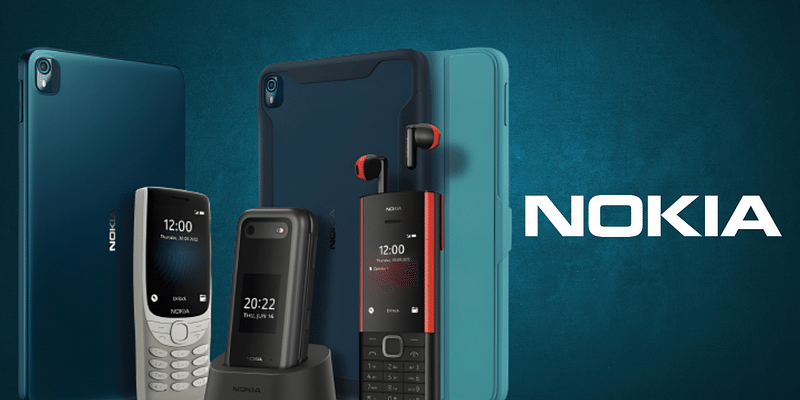From Brick to Smartphone: The Evolution of Nokia Phones
From Brick to Smartphone: The Evolution of Nokia Phones

Nokia, a Finnish telecommunications company, has a rich history in the mobile phone industry. From its humble beginnings in the early 1980s to its more recent foray into the world of smartphones. Nokia has consistently been at the forefront of mobile technology. For those who grew up in the early days of mobile communication, Nokia phones were more than just devices - they were companions, filled with memories and sentimental value. The durable build, distinctive ringtone, and iconic designs bring back a flood of memories. It reminds us of a simpler time when text messages were sent with T9 predictive texting, and Snake was the ultimate game. The nostalgia of Nokia phones lies not only in their physical attributes but also in the emotions and experiences associated with them. They represent a bygone era. An era when communication was less complicated, and technology was treasured in its simplicity. Old Nokia phones evoke a sense of comfort, reminding us of a time when the world seemed a little smaller and life was a bit more straightforward. That being said, Nokia has evolved. In this article, we will delve into the evolution of Nokia phones. We'll trace its journey from simple brick-like devices to cutting-edge smartphones.
The Birth of the Brick Phone
In the 1980s, Nokia entered the mobile phone market with its first device, the Mobira Senator. While bulky and heavy, it represented a major leap forward in mobile communication. Nokia continued to refine its designs, eventually releasing the iconic Nokia 3210 in 1999. This compact and robust device gained popularity worldwide. It had a durable build, interchangeable covers, and a long-lasting battery.
The Era of Durability and Iconic Design
Nokia became synonymous with durable phones. It earned a reputation for producing devices that could withstand rough usage. The Nokia 3310, released in 2000, epitomized this trend. It became one of the best-selling mobile phones of all time. All thanks to its exceptional battery life and legendary resilience. The later years saw the introduction of various iconic models, such as the Nokia 5110, 6600, and N-Gage, which further cemented Nokia's position as a leading mobile phone manufacturer.
The Rise of the Smartphone Revolution
As the 21st century progressed, smartphones began to dominate the mobile phone landscape. Nokia recognized this shift and responded by introducing its line of smartphones powered by the Symbian operating system. In 2005, the Nokia Nseries emerged, featuring advanced multimedia capabilities and innovative designs. The N95, released in 2006, gained acclaim for its cutting-edge features, including a 5-megapixel camera and built-in GPS.
The Windows Phone Era
In 2011, Nokia entered into a partnership with Microsoft, adopting the Windows Phone platform for its smartphones. The Lumia series marked a new chapter in Nokia's evolution. With devices like the Lumia 920 and 1020 showcasing impressive camera technology and a unique design aesthetic. The Windows Phone ecosystem struggled to compete with iOS and Android. Though Nokia's commitment to quality hardware and imaging capabilities gained them a dedicated following.
The Revival with Android
In 2016, Nokia returned to the smartphone market with the Nokia 6, but this time embracing the Android operating system. The move proved pivotal for the company. It allowed them to tap into the extensive app ecosystem and user-friendly interface associated with Android. Following releases like the Nokia 7 Plus and Nokia 8 Sirocco continued to receive praise for their build quality and clean software experience.
Embracing Modern Smartphone Trends
Nokia's recent smartphones have demonstrated a willingness to adapt to modern smartphone trends. The company has incorporated features such as dual-camera setups, edge-to-edge displays, and even the resurgence of nostalgic classics like the Nokia 3310 in a modernized form. Nokia has also prioritized software updates and security. This ensures a consistent and up-to-date user experience.
In conclusion, the evolution of Nokia phones mirrors the broader trends within the mobile phone industry. From their early brick-like devices to the present era of sleek and powerful smartphones, Nokia has strived to innovate and cater to evolving consumer demands. Nokia has faced its fair share of challenges and transitions. But, the company's commitment to quality craftsmanship and user experience has enabled it to maintain a loyal fan base. As technology continues to advance, just like Avalon78 mobile, it will be intriguing to see how Nokia further adapts and shapes the future of mobile communication.
© 2023 YouMobile Inc. All rights reserved






